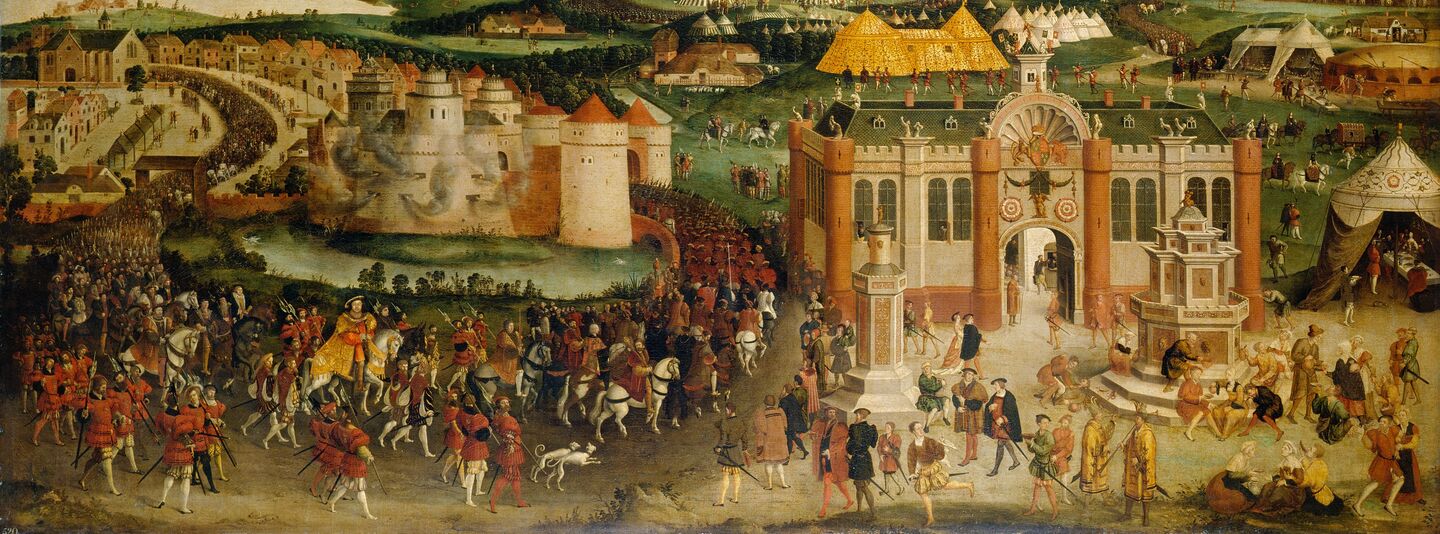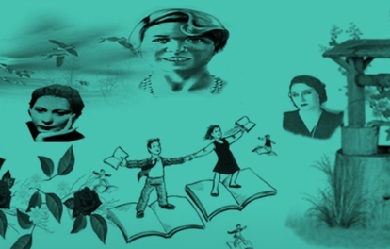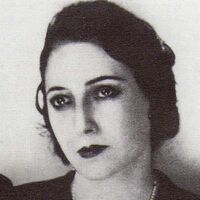
Juana Fernández Morales, cuyo seudónimo era Juana de Ibarbourou, conocida popularmente como Juana de América, (8 de marzo de 1892, Melo - 15 de julio de 1979, Montevideo), fue una poetisa uruguaya. El 10 de agosto de 1929 recibió, en el Salón de los Pasos Perdidos del Palacio Legislativo, el título de «Juana de América» de la mano de Juan Zorrilla de San Martín y una multitud de poetas y personalidades. Fue enterrada con honores de Ministro de Estado en el panteón de su familia del Cementerio del Buceo.
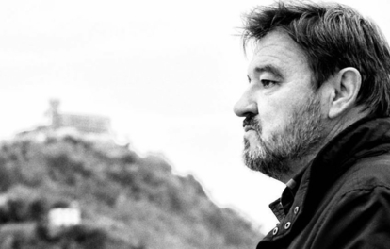
Karmelo C. Iribarren (San Sebastián, 1959) es un poeta español. Nace en San Sebastián (Guipúzcoa) el 19 de septiembre de 1959. Empieza a leer muy pronto y vorazmente ("sobre todo novelitas de aventuras" según confiesa) y también empieza a trabajar pronto "de vendedor, de albañil, de encuestador, en fin, de todo". Y finalmente de camarero durante más de veinte años, aunque es a los trece cuando se pone por primera vez detrás de una barra "en una especie de residencia de ancianos". Ni va a la universidad ni forma parte de ningún tipo de círculo o conventículo literario. "Eso sí, me he leído la Biblia en verso. Miles de libros". Durante mucho tiempo no se decide a reunir en un volumen sus primeros versos, aunque aparecen poemas sueltos en distintos fanzines ya a partir de los últimos setenta. Sin embargo, una noche de 1989, destruye todo lo escrito hasta ese momento, con excepción de unos cuantos poemas de 1985 y 1986, que integra más tarde en sus libros. En 1993, el Ateneo Obrero de Gijón incluye su plaquette Bares y noches en la colección de poesía Máquina de Sueños, dedicada a difundir la obra temprana de autores poco conocidos, lo que le anima a enviar el original de su primer libro, La condición urbana, al editor y también poeta Abelardo Linares. La sevillana editorial Renacimiento, de la que éste es responsable, lo publica en 1995 y se convierte en su casa habitual en adelante. Serie B y Desde el fondo de la barra, en 1998 y 1999, confirman que ha encontrado una voz propia. La crítica se apresura a catalogarlo junto a los representantes del realismo sucio, y es cierto que tanto Bukowski como Carver figuran entre sus referentes, pero es Luis Antonio de Villena quien subraya que ninguno de ellos lleva tan lejos como Iribarren la austeridad formal que conduce a una literatura casi desnuda, por lo que propone los términos minimalismo y realismo limpio como más adecuados a su caso. Claro que muchos también le cuentan entre los cultivadores de la poesía de la experiencia, grupo formado por autores de su generación al fin y al cabo, pero de quienes le alejan determinados aspectos como el apego de éstos a la métrica tradicional. Con el nuevo siglo la poesía de Iribarren empieza a ser más conocida y apreciada, como prueban la antología de poemas traducidos al euskera Gainontzekoa, kontuak dirá en 2000, y sobre todo La ciudad en 2002, que contiene una selección personal de su obra entre 1985 y 2001, incluyendo dieciséis inéditos. Este libro es el número dos de la popular colección Antologías de Renacimiento, que acaba de inaugurarse con el de Luis García Montero y dedica los siguientes a la obra de, entre otros, Carlos Marzal, Juan Luis Panero, Claudio Rodríguez, Agustín de Foxá, Félix Grande, Andrés Trapiello o Roger Wolfe en 2007, volumen de cuya selección se ocupa el propio Iribarren y prologa Luis Alberto de Cuenca. Por fin en 2005 aparece su poesía completa bajo el título Seguro que esta historia te suena (1985-2005), donde compila toda su producción añadiendo el nuevo capítulo La frontera y otros poemas además de veintitrés Poemas dispersos, de los que recupera algunos en títulos posteriores. Joaquín Juan Penalva recuerda que, con la publicación de este libro de libros, Iribarren da por cerrada su obra, ya que tiene la impresión de haber contado todo lo que se propuso.5 No es así. Después de que Anaya edite otra antología en 2006, esta vez orientada al lector joven, con el título El tamaño de los sueños, en 2007 da a la imprenta su nuevo poemario Ola de frío. La segunda edición, en 2008, de la antología La ciudad, sin duda su personal best seller, acoge también poemas de este último título y el número de inéditos que contiene se eleva a veintiséis. Después aparece Atravesando la noche, que publica Huacanamo en 2009. Además, Ola de frío conoce una segunda edición ese mismo año, y al siguiente Antonio Ventura, responsable de la editorial especializada El jinete azul, le da la oportunidad de llenar un peculiar volumen llamado Versos que el viento arrastra con nuevos poemas dedicados al público infantil e ilustrados por Cristina Müller.6 En 2011, Ediciones del 4 de agosto incluye en su colección de cuadernillos elaborados artesanalmente Planeta Clandestino la curiosa antología Un leve guiño de luz hacia la sombra en edición limitada, numerada y firmada por el autor. Se trata de una selección a cargo de Carmen Beltrán de veintiséis breves poemas, uno de ellos inédito, en torno a los más variados objetos (entre otros, un cigarrillo, una foto, una americana, una chapa de Kas, un busto de Baroja o un poema como objeto). Poco después, llega a las librerías Otra ciudad, otra vida, de nuevo bajo el sello Huacanamo, libro que ahonda en el tono elegíaco y triste de Atravesando la noche, sin por ello renunciar a su ironía característica, y que extrema además su búsqueda de la concisión, más acusada con cada nueva entrega. En mayo de 2012, aparece la nueva edición de su poesía completa Seguro que esta historia te suena (1985-2012), en la que al contenido de la anterior (La condición urbana, Serie B, Desde el fondo de la barra y La frontera y otros poemas) se añaden los libros Ola de frío, Atravesando la noche, Otra ciudad, otra vida y una sección titulada Inéditos y otros poemas que incluye treinta composiciones más. Muestras de su obra forman parte entonces de dos antologías significativas: A finales de 2012, Diez de diez. Poesía española reciente de la editorial mexicana Tedium Vitae, junto a Javier Cánaves, Rafael Fombellida, Pablo García Casado, Michel Gaztambide, Raquel Lanseros, Itziar Mínguez Arnáiz, Pepe Ramos, Javier Salvago y Arturo Tendero; y a principios de 2013, Disociados. Antilogía de Ya lo dijo Casimiro Parker, junto a El Ángel, Roger Wolfe y David González. En junio de ese mismo año Renacimiento publica su nuevo poemario Las luces interiores,10 que tiene una gran acogida y es seguido en diciembre por el siguiente, titulado La piel de la vida11 y a cargo de Baile del Sol. Casi al mismo tiempo, en Argentina, aparece una nueva antología (No hay más) coeditada por Kriller71 y Zindo y Gafuri,12 una selección que repasa toda su trayectoria. En 2014 se editan, de nuevo en Renacimiento, Diario de K, su primer trabajo en prosa, un conjunto de textos breves sobre los más variados asuntos, que pese al cambio de género, comparte con el resto de su obra una mirada muy personal, y una nueva edición de la antología La ciudad, ampliada con poemas de sus últimos libros (Atravesando la noche, Otra ciudad, otra vida, Las luces interiores y La piel de la vida) y algunos inéditos. Lo mismo ocurre al año siguiente con Seguro que esta historia te suena, que vuelve a editarse por tercera vez, añadiéndose Las luces interiores, La piel de la vida e inéditos a su contenido, y convertido así en el volumen que recoge toda su obra en verso publicada entre 1985 y 2015. Obra que se prolonga en 2016 con el nuevo libro de poemas titulado Haciendo planes, al que sigue, poco después, una segunda edición, notablemente ampliada, de Diario de K, ambos en Renacimiento. 2017 es su año. Comienza con la reedición de Las luces interiores (2013), uno de sus libros más celebrados, que aparece bajo nueva portada y completado con nuevos poemas, al que siguen sendas antologías: El amor, ese viejo neón, en Aguilar y Pequeños incidentes, en Visor, prologado por Luis García Montero, publicaciones que tienen una gran repercusión en los medios. Finalmente, aparece Mientras me alejo, su esperado nuevo poemario. Adaptaciones a otros medios En 2006, aparece el libro de relatos Secundarios de lujo del novelista Juan M. Velázquez, que incluye un cuento titulado Pobres diablos. Éste constituye, según su autor, un intento de desarrollar el poema de Iribarren del mismo título que forma parte de La frontera y otros poemas. En 2011, el cantautor y poeta Vicente Llorente pone música a Los días normales, uno de los poemas de Atravesando la noche, convirtiéndolo en canción. El cineasta Jairo Arráez se encarga de realizar un vídeo-clip sobre este tema que aparece en Internet el 16 de mayo.16 Ese mismo año, se produce y estrena el cortometraje Bajo una luz distinta, dirigido por Neftalí Vela y basado en un poema homónimo de Iribarren que también forma parte de su libro Atravesando la noche. En 2012, el poema Supervivencia, de Serie B, es uno de los elegidos por la Asociación para el Desarrollo de la Ribagorza Románica y el periodista Ferran Barber, responsable del proyecto, para formar parte de la llamada Carrer de la Poesía. Esta iniciativa consiste en situar sobre muros, vallas y farolas a lo largo de un paseo en el Valle de Bohí (Lérida), una serie de obras de distintos poetas contemporáneos. En 2013, algunos de sus poemas son musicados por Gorka Gabilondo, Javi Irurtia y Lorea Azpeitia e incluidos, junto a otros de distintos autores, en el disco Borbotones en el aula. Como curiosidad, en un momento de la película La vida mancha (Enrique Urbizu, 2003), el personaje que interpreta el actor José Coronado pregunta dónde se encuentra la Calle Karmelo Iribarren. Naturalmente ésta no existe (aún) y la referencia no es más que un guiño privado debido al guionista Michel Gaztambide, también poeta y también amigo del autor, que ha convertido a la película en objeto de culto para los aficionados a la obra del escritor donostiarra. Autores relacionados Entre los escritores y obras de los que admite sentirse cerca se encuentran la prosa de Pío Baroja y Josep Pla o de los norteamericanos Bukowski, Carver, Fante y Shepard, además de la novela negra en general con Raymond Chandler en cabeza pero también Hammett, Cain, Macdonald y otros,20 así como la poesía en nuestro idioma de "Rubén Darío, los Machado (más Manuel, creo), el Dámaso Alonso de Poemillas de la ciudad, Ángel González, Jaime Gil de Biedma, Félix Grande, Luis Alberto de Cuenca, Abelardo Linares, Javier Salvago y Roger Wolfe". A esta nómina añade, en una entrevista de 2011, los nombres de Miguel Hernández y Gabriel Celaya, entre los que le han marcado, y entre sus preferencias como lector, los de Juan Luis Panero, Eloy Sánchez Rosillo, Luis Antonio de Villena, Jon Juaristi, Ramón Eder, Luis García Montero, Raquel Lanseros, Elena Román, Francisco Díaz de Castro, Michel Gaztambide, Arturo Tendero, Javier Cánaves, Itziar Mínguez Arnáiz, Carmen Beltrán y el narrador y también poeta estadounidense James Sallis. Obra Prosa * Diario de K, Renacimiento, Colección A la Mínima, 2014, prólogo de Enrique García-Máiquez, reseña de solapa de Ape Rotoma * Diario de K (segunda edición ampliada y revisada), Renacimiento, Colección A la Mínima, 2016 Poesía Libros * La condición urbana, Renacimiento, 1995 * Serie B, Renacimiento, 1998 * Desde el fondo de la barra, Línea de fuego, 1999 * La frontera y otros poemas, Renacimiento, 2005 * Seguro que esta historia te suena. Poesía completa (1985-2005), Renacimiento, Colección Calle del Aire, 2005 * Ola de frío, Renacimiento, Colección Calle del Aire, 2007 * Atravesando la noche, Huacanamo, 2009 * Ola de frío (segunda edición), Renacimiento, Colección Calle del Aire, 2009 * Versos que el viento arrastra, El jinete azul, 2010, ilustraciones de Cristina Muller * Otra ciudad, otra vida, Huacanamo, 2011 * Seguro que esta historia te suena. Poesía completa (1985-2012) (segunda edición corregida y ampliada), Renacimiento, Colección Calle del Aire, 2012 * Las luces interiores, Renacimiento, 2013 * La piel de la vida, Baile del Sol, 2013 * Seguro que esta historia te suena. Poesía completa (1985-2015) (tercera edición corregida y ampliada), Renacimiento, Colección Calle del Aire, 2015 * Haciendo planes, Renacimiento, 2016 * Las luces interiores (segunda edición), Renacimiento, 2017 * Mientras me alejo, Visor, 2017, prólogo de Luis Alberto de Cuenca Plaquettes * Bares y noches, Ateneo Obrero de Gijón, Colección Máquina de Sueños, 1993 * Un leve guiño de luz hacia la sombra. La poesía de las cosas (1985-2001), antología, 4 de agosto, Colección Planeta Clandestino, 2011, selección y notas de Carmen Beltrán Falces * Poemas, antología, Aula Enrique Díez-Canedo, 2015 Antologías * Gainontzekoa, kontuak dira (traducciones al euskera), Erein, 2000 * La ciudad (Antología 1985-2001), Renacimiento, 2002, prólogo de Vicente Tortajada, epílogo de Michel Gaztambide, reseña de solapa de Luis Antonio de Villena * El tamaño de los sueños, Anaya, 2006 * La ciudad (Antología 1985-2008) (segunda edición corregida y ampliada), Renacimiento, 2008, prólogo de Joaquín Juan Penalva, epílogo de Vicente Tortajada, reseña de solapa de Abelardo Linares * No hay más, Kriller71 y Zindo y Gafuri, 2013 * La ciudad (Antología 1985-2014) (tercera edición), Renacimiento, 2014, prólogo de José Luis Morante, epílogo de Vicente Tortajada, reseña de solapa de Abelardo Linares Pequeños incidentes. Antología poética, Visor, 2017, prólogo de Luis García Montero El amor, ese viejo neón, Editorial Aguilar, 2017 Antologías colectivas que incluyen su obra * Poesía española contemporánea, Fundación Cervantes, Biblioteca de Literatura Española, 1997, poesía española traducida al ruso * Viento de cine. El cine en la poesía española de expresión castellana, Hiperión, 2002, selección, introducción y notas de José María Conget * Poesía vasca contemporánea, 2003, poesía en euskera y castellano traducida al portugués, selección de Kepa Murua * Efectos secundarios, Anaya, 2004, selección de Antonio Ventura y Samuel Alonso Omeñaca * Poemas para cruzar el desierto, Línea de Fuego, 2004, selección de Ángel Sierra y Eduardo Errasti * Poesía para bacterias, Cuerdos de Atar, Colección Bala Rasa, 2008, selección de Sergi Puertas * Resaca / Hank Over. Un homenaje a Charles Bukowski, Caballo de Troya / Random House Mondadori, 2008, selección y prólogo de Patxi Irurzun y Vicente Muñoz Álvarez Poesía viva. Poetas vascos en castellano, Muelle de Uribitarte, Colección Gerión de Poesía, 2009 * Viscerales, Ediciones del Viento, 2011, selección y prólogo de Mario Crespo y José Ángel Barrueco * Nínfulas, Centro Cultural Generación del 27, 2011, selección y prólogo de Juan Bonilla * Aquel agosto de nuestras vidas y 100 balas de plata clandestinas (Antología-homenaje al Planeta Clandestino), 4 de agosto, Colección Planeta Clandestino, 2012, selección y prólogo de Ignacio Escuín Borao * Diez de diez. Poesía española reciente, Tedium Vitae, Guadalajara (México), 2012, edición de Sergio Ortiz * Disociados. Antilogía. El Ángel, Karmelo C. Iribarren, Roger Wolfe y David González, Ya lo dijo Casimiro Parker, 2013, selección y prólogo de José Ángel Barrueco y Gsús Bonilla El libro de Adiós. Antología de la muerte. Cuentos, poesías y fotografías, Funespaña, 2013, selección de Javier Gil Martín * Ángeles errantes. Las nubes en el cielo poético español, Antigua Imprenta Sur, 2013, edición de Antonio Lafarque * En legítima defensa. Poetas en tiempos de crisis, Bartleby Editores, 2014, prólogo de Antonio Gamoneda * La tertulia errante, El Gallo de Oro, 2015 * La casa de los corazones rotos, Ediciones Vitruvio, 2015, selección de Abel Santos Gente de Nod, KRK Ediciones, 2016, fotografías de Alejandro Nafría, selección de Emma Cabal Como antólogo * Días sin pan (antología) de Roger Wolfe, Renacimiento, 2007, selección de Karmelo C. Iribarren, prólogo de Luis Alberto de Cuenca Referencias Wikipedia – https://es.wikipedia.org/wiki/Karmelo_C._Iribarren
▪️▪️▪️▪️▪️▪️▪️▪️▪️▪️ ▪️▪️▪️▪️▪️▪️▪️▪️ ▪️▪️▪️▪️▪️▪️ ▪️▪️▪️▪️ ▪️▪️▪️ ▪️▪️ ▪️ Finding my way with writing and poetry. 🪶The world makes more sense with poetry. Connect with me on: Tumblr: 1introvertedsage My Poetic Side: Introverted Sage All Poetry: Introverted Sage Substack: Introverted Sage
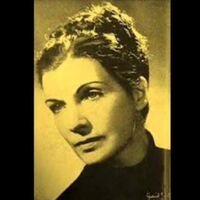
Sara Iglesias Casadel artísticamente conocida como Sara de Ibáñez, cuyo apellido tomó de su marido, fue una poeta uruguaya (Chamberlain, Tacuarembó, 10 de enero de 1909 – Montevideo, 3 de abril de 1971), conocida cariñosamente como Gran Sara por escritores como Octavio Paz. Fue reconocida entre otros premios por el Premio de la Academia Nacional de Letras y por el Premio Nacional de Literatura en 1972. Vivió de niña en Chamberlain, departamento de Tacuarembó, hasta que su familia se mudó a Montevideo. Fue profesora de enseñanza secundaria desde 1945. Se casó con el también poeta Roberto Ibáñez. La pareja tuvo tres hijas, Ulalume, Suleika y Solveig, que también se convirtieron en escritoras. Ulalume se trasladó a México donde, bajo el nombre de Ulalume González de León, desarrolló una brillante carrera como poeta, traductora, ensayista y editora. Sara de Ibáñez se destacó por tener una vida recogida y privada.2 Comenzó a escribir de niña, aunque no publicó un libro hasta cumplidos 30 años. Todos sus libros recibieron premios en Uruguay, además de dos póstumos. Sara tenía por costumbre escribir dos libros a la vez al igual que hacía su marido; cada uno era diferente en tema y estructura. En vida fue aclamada por varios poetas contemporáneos, como Pablo Neruda, quien prologó uno de sus libros, comparándola con Sor Juana Inés de la Cruz, Gabriela Mistral y María Luisa Bombal, y expresó su admiración por sus poesías en varias ocasiones. Mistral también citó a Ibáñez, de su poesía misteriosa y de significados profundos,2 Jules Supervielle alabó su conocimiento de la poesía occidental, especialmente del simbolismo francés, y así Vicente Aleixandre, Alfonso Reyes, Pedro Henríquez Ureña, Cecilia Meireles, Manuel Bandeira, Carlos Drummond de Andrade, Josep Carner, Rafael Alberti, León Felipe, Octavio Paz, Amado Alonso, Emilio Noulet entre otros. Estilo y temas Sara de Ibáñez destaca por su poesía misteriosa y casi hermética, de cierta tradición barroca, e ideas claras y descarnadas. Su hermetismo causa, sin embargo, dificultades de interpretación que hacen accesibles sus escritos tan sólo a minorías cultas. Mostró en muchas ocasiones los temas del suicidio y de las batallas. Su obra se caracteriza por la angustia de la existencia, el desamparo, la muerte, el amor, la autoaniquilación de la humanidad y la relación hombre-Dios. En menor medida, trata el sentimiento patriótico (Canto a Montevideo) y la condena a la guerra (Hora ciega). Sus libros más representativos son La batalla y Apocalipsis. Se ha notado un gusto por la simetría, iniciando varios versos de la misma manera o estableciendo reglas de palabras antónimas. Buscaba la perfección técnica y la pureza y transparencia de las imágenes. Llegó a ser una maestra de la métrica y el ritmo. Poemarios * Canto (1940). * Canto a Montevideo (1941). * Hora ciega (1943). * Pastoral (1948). * Artigas (1951). * Las estaciones y otros poemas (1957). * La batalla (1967). * Apocalipsis 20 (1970). * Canto póstumo (1972). Poemas Un ejemplo de su obra es el poema "Quisiera abrir mis venas...". Quisiera abrir mis venas bajo los durazneros, en aquel distraído verano de mi boca. Quisiera abrir mis venas para buscar tus rastros, lenta rueda comida por agrias amapolas. Yo te ignoraba fina colmena vigilante. Río de mariposas naciendo en mi cintura. Y apartaba las yemas, el temblor de los álamos, y el viento que venía con máscara de uvas. Yo no quise borrarme cuando no te miraba pero me sostenías, fresca mano de olivo. Estrella navegante no pude ver tu borda pero me atravesaste como a un mar distraído. Ahora te descubro, tan herido extranjero, paraíso cortado, esfera de mi sangre. Una hierba de hierro me atraviesa la cara... Sólo ahora mis ojos desheredados se abren. Ahora que no puedo derruir tu frontera debajo de mi frente, detrás de mis palabras. Tocar mi vieja sombra poblada de azahares, mi ciego corazón perdido en la manzana... Referencias Wikipedia-http://es.wikipedia.org/wiki/Sara_de_Ibáñez

I started dabbling at age 13, and after a while, I was writing full poems, however, I only have poetry from when I was 16 and up. I am now 28, and I have found that it is so much easier to say things through poetry than it is to verbalize them. I draw inspiration for my poetry from writers, musicians, movies, daily interactions, my faith, and much more. As far as writers go, when I was younger I got introduced to Langston Hughes, and I have learned to take from his style of writing. I also enjoy some good old Shakespeare every once in a while. Most of my influence, however, comes from music; I draw my influence from genres that include but are not limited to, hip-hop, folk, rock, and country. Another thing that really impacts my poetry are events that have taken place in my life. Movie characters and themes also have a chance to have their fair share of influence in my poetry. I am a Christ-follower first and foremost, so, beneath most of my poems stories, there is a spiritual undertone. My plainly faith-based poems, however, are a written (hard) memory of the headspace that I was in at that time in my life. People can create all sorts of art without having to fabricate who they are, and without compromising who they are as a person; it's being able to take from other peoples experiences and write about them, based on the writer's interpretation, that can set a writer apart from others. I write mainly Free Verse poetry, because to me poetry is a lot of self-expression, and if I were to follow the set guidelines of a certain type of poetry, I would then be forfeiting my creative license. Sometimes, however, I like to take from certain styles of poetry, especially when I am trying to convey a particular emotion, for example, I not only write Free Verse but, I also have learned to take from styles, such as Blank Verse & Limericks. I have a friend who said this, "If there is one thing I have learned about writing over the years it is that the best work comes from writing without the audience in mind." I find this quote to be accurate for not only my writing but for writing in general. Love y'all!
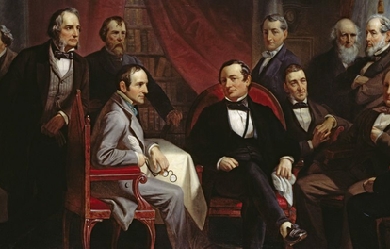
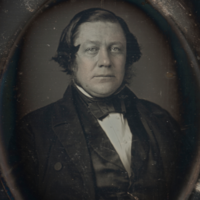
Washington Irving (April 3, 1783– November 28, 1859) was an American short story writer, essayist, biographer, historian, and diplomat of the early 19th century. He is best known for his short stories “Rip Van Winkle” (1819) and “The Legend of Sleepy Hollow” (1820), both of which appear in his book The Sketch Book of Geoffrey Crayon, Gent. His historical works include biographies of George Washington, Oliver Goldsmith, and Muhammad, and several histories of 15th-century Spain dealing with subjects such as Christopher Columbus, the Moors and the Alhambra. Irving served as the U.S. ambassador to Spain from 1842 to 1846. He made his literary debut in 1802 with a series of observational letters to the Morning Chronicle, written under the pseudonym Jonathan Oldstyle. After moving to England for the family business in 1815, he achieved international fame with the publication of The Sketch Book of Geoffrey Crayon, Gent. in 1819–20. He continued to publish regularly—and almost always successfully—throughout his life, and just eight months before his death (at age 76, in Tarrytown, New York), completed a five-volume biography of George Washington. Irving, along with James Fenimore Cooper, was among the first American writers to earn acclaim in Europe, and Irving encouraged American authors such as Nathaniel Hawthorne, Herman Melville, Henry Wadsworth Longfellow, and Edgar Allan Poe. Irving was also admired by some European writers, including Walter Scott, Lord Byron, Thomas Campbell, Francis Jeffrey, and Charles Dickens. As America’s first genuine internationally best-selling author, Irving advocated for writing as a legitimate profession and argued for stronger laws to protect American writers from copyright infringement. Biography Early years Washington Irving’s parents were William Irving, Sr., originally of Quholm, Shapinsay, Orkney, and Sarah (née Sanders), Scottish-English immigrants. They married in 1761 while William was serving as a petty officer in the British Navy. They had eleven children, eight of whom survived to adulthood. Their first two sons, each named William, died in infancy, as did their fourth child, John. Their surviving children were: William, Jr. (1766), Ann (1770), Peter (1771), Catherine (1774), Ebenezer (1776), John Treat (1778), Sarah (1780), and Washington. The Irving family settled in Manhattan, New York City, and was part of the city’s small, vibrant merchant class when Washington Irving was born on April 3, 1783, the same week city residents learned of the British ceasefire that ended the American Revolution; Irving’s mother named him after the hero of the revolution, George Washington. At age six, with the help of a nanny, Irving met his namesake, who was then living in New York after his inauguration as president in 1789. The president blessed young Irving, an encounter Irving later commemorated in a small watercolor painting, which still hangs in his home today. The Irvings lived at 131 William Street at the time of Washington Irving’s birth. The family later moved across the street to 128 William St. Several of Washington Irving’s older brothers became active New York merchants, and they encouraged their younger brother’s literary aspirations, often supporting him financially as he pursued his writing career. An uninterested student, Irving preferred adventure stories and drama and, by age fourteen, was regularly sneaking out of class in the evenings to attend the theater. The 1798 outbreak of yellow fever in Manhattan prompted his family to send him to healthier climes upriver, and Irving was dispatched to stay with his friend James Kirke Paulding in Tarrytown, New York. It was in Tarrytown that Irving became familiar with the nearby town of Sleepy Hollow, with its quaint Dutch customs and local ghost stories. Irving made several other trips up the Hudson as a teenager, including an extended visit to Johnstown, New York, where he passed through the Catskill mountain region, the setting for “Rip Van Winkle”. "[O]f all the scenery of the Hudson", Irving wrote later, “the Kaatskill Mountains had the most witching effect on my boyish imagination”. The 19-year-old Irving began writing letters to the New York Morning Chronicle in 1802, submitting commentaries on the city’s social and theater scene under the name of Jonathan Oldstyle. The name, which purposely evoked the writer’s Federalist leanings, was the first of many pseudonyms Irving would employ throughout his career. The letters brought Irving some early fame and moderate notoriety. Aaron Burr, a co-publisher of the Chronicle, was impressed enough to send clippings of the Oldstyle pieces to his daughter, Theodosia, while writer Charles Brockden Brown made a trip to New York to recruit Oldstyle for a literary magazine he was editing in Philadelphia. Concerned for his health, Irving’s brothers financed an extended tour of Europe from 1804 to 1806. Irving bypassed most of the sites and locations considered essential for the development of an upwardly mobile young man, to the dismay of his brother William. William wrote that, though he was pleased his brother’s health was improving, he did not like the choice to “gallop through Italy... leaving Florence on your left and Venice on your right”. Instead, Irving honed the social and conversational skills that would later make him one of the world’s most in-demand guests. “I endeavor to take things as they come with cheerfulness”, Irving wrote, “and when I cannot get a dinner to suit my taste, I endeavor to get a taste to suit my dinner”. While visiting Rome in 1805, Irving struck up a friendship with the American painter Washington Allston, and nearly allowed himself to be persuaded into following Allston into a career as a painter. “My lot in life, however”, Irving said later, “was differently cast”. First major writings Irving returned from Europe to study law with his legal mentor, Judge Josiah Ogden Hoffman, in New York City. By his own admission, he was not a good student, and barely passed the bar in 1806. Irving began actively socializing with a group of literate young men he dubbed “The Lads of Kilkenny”. Collaborating with his brother William and fellow Lad James Kirke Paulding, Irving created the literary magazine Salmagundi in January 1807. Writing under various pseudonyms, such as William Wizard and Launcelot Langstaff, Irving lampooned New York culture and politics in a manner similar to today’s Mad magazine. Salmagundi was a moderate success, spreading Irving’s name and reputation beyond New York. In its seventeenth issue, dated November 11, 1807, Irving affixed the nickname “Gotham”—an Anglo-Saxon word meaning “Goat’s Town”—to New York City. In late 1809, while mourning the death of his seventeen-year-old fiancée Matilda Hoffman, Irving completed work on his first major book, A History of New-York from the Beginning of the World to the End of the Dutch Dynasty, by Diedrich Knickerbocker (1809), a satire on self-important local history and contemporary politics. Prior to its publication, Irving started a hoax akin to today’s viral marketing campaigns; he placed a series of missing person advertisements in New York newspapers seeking information on Diedrich Knickerbocker, a crusty Dutch historian who had allegedly gone missing from his hotel in New York City. As part of the ruse, Irving placed a notice—allegedly from the hotel’s proprietor—informing readers that if Mr. Knickerbocker failed to return to the hotel to pay his bill, he would publish a manuscript Knickerbocker had left behind. Unsuspecting readers followed the story of Knickerbocker and his manuscript with interest, and some New York city officials were concerned enough about the missing historian that they considered offering a reward for his safe return. Riding the wave of public interest he had created with his hoax, Irving—adopting the pseudonym of his Dutch historian—published A History of New York on December 6, 1809, to immediate critical and popular success. “It took with the public”, Irving remarked, “and gave me celebrity, as an original work was something remarkable and uncommon in America”. Today, the surname of Diedrich Knickerbocker, the fictional narrator of this and other Irving works, has become a nickname for Manhattan residents in general. After the success of A History of New York, Irving searched for a job and eventually became an editor of Analectic Magazine, where he wrote biographies of naval heroes like James Lawrence and Oliver Perry. He was also among the first magazine editors to reprint Francis Scott Key’s poem “Defense of Fort McHenry”, which would later be immortalized as “The Star-Spangled Banner”, the national anthem of the United States. Like many merchants and New Yorkers, Irving originally opposed the War of 1812, but the British attack on Washington, D.C. in 1814 convinced him to enlist. He served on the staff of Daniel Tompkins, governor of New York and commander of the New York State Militia. Apart from a reconnaissance mission in the Great Lakes region, he saw no real action. The war was disastrous for many American merchants, including Irving’s family, and in mid-1815, he left for England to attempt to salvage the family trading company. He remained in Europe for the next seventeen years. Irving was elected a member of the American Antiquarian Society in 1815. Life in Europe The Sketch Book Irving spent the next two years trying to bail out the family firm financially but eventually had to declare bankruptcy. With no job prospects, Irving continued writing throughout 1817 and 1818. In the summer of 1817, he visited Walter Scott, beginning a lifelong personal and professional friendship. Irving continued writing: he composed the short story “Rip Van Winkle” overnight while staying with his sister Sarah and her husband, Henry van Wart in Birmingham, England, a place that also inspired other works. In October 1818, Irving’s brother William secured for Irving a post as chief clerk to the United States Navy, and urged him to return home. Irving turned the offer down, opting to stay in England to pursue a writing career. In the spring of 1819, Irving sent to his brother Ebenezer in New York a set of short prose pieces that he asked be published as The Sketch Book of Geoffrey Crayon, Gent. The first installment, containing “Rip Van Winkle”, was an enormous success, and the rest of the work would be equally successful; it was issued in 1819–1820 in seven installments in New York, and in two volumes in London ("The Legend of Sleepy Hollow" would appear in the sixth issue of the New York edition, and the second volume of the London edition). Like many successful authors of this era, Irving struggled against literary bootleggers. In England, some of his sketches were reprinted in periodicals without his permission, a legal practice as there was no international copyright law at the time. To prevent further piracy in Britain, Irving paid to have the first four American installments published as a single volume by John Miller in London. Irving appealed to Walter Scott for help procuring a more reputable publisher for the remainder of the book. Scott referred Irving to his own publisher, London powerhouse John Murray, who agreed to take on The Sketch Book. From then on, Irving would publish concurrently in the United States and Britain to protect his copyright, with Murray being his English publisher of choice. Irving’s reputation soared, and for the next two years, he led an active social life in Paris and Britain, where he was often feted as an anomaly of literature: an upstart American who dared to write English well. Bracebridge Hall and Tales of a Traveller With both Irving and publisher John Murray eager to follow up on the success of The Sketch Book, Irving spent much of 1821 travelling in Europe in search of new material, reading widely in Dutch and German folk tales. Hampered by writer’s block—and depressed by the death of his brother William—Irving worked slowly, finally delivering a completed manuscript to Murray in March 1822. The book, Bracebridge Hall, or The Humorists, A Medley (the location was based loosely on Aston Hall, occupied by members of the Bracebridge family, near his sister’s home in Birmingham) was published in June 1822. The format of Bracebridge was similar to that of The Sketch Book, with Irving, as Crayon, narrating a series of more than fifty loosely connected short stories and essays. While some reviewers thought Bracebridge to be a lesser imitation of The Sketch Book, the book was well received by readers and critics. “We have received so much pleasure from this book”, wrote critic Francis Jeffrey in the Edinburgh Review, “that we think ourselves bound in gratitude... to make a public acknowledgement of it.” Irving was relieved at its reception, which did much to cement his reputation with European readers. Still struggling with writer’s block, Irving traveled to Germany, settling in Dresden in the winter of 1822. Here he dazzled the royal family and attached himself to Mrs. Amelia Foster, an American living in Dresden with her five children. Irving was particularly attracted to Mrs. Foster’s 18-year-old daughter Emily and vied in frustration for her hand. Emily finally refused his offer of marriage in the spring of 1823. He returned to Paris and began collaborating with playwright John Howard Payne on translations of French plays for the English stage, with little success. He also learned through Payne that the novelist Mary Wollstonecraft Shelley was romantically interested in him, though Irving never pursued the relationship. In August 1824, Irving published the collection of essays Tales of a Traveller—including the short story “The Devil and Tom Walker”—under his Geoffrey Crayon persona. “I think there are in it some of the best things I have ever written”, Irving told his sister. But while the book sold respectably, Traveller was dismissed by critics, who panned both Traveller and its author. “The public have been led to expect better things”, wrote the United States Literary Gazette, while the New-York Mirror pronounced Irving “overrated”. Hurt and depressed by the book’s reception, Irving retreated to Paris where he spent the next year worrying about finances and scribbling down ideas for projects that never materialized. Spanish books While in Paris, Irving received a letter from Alexander Hill Everett on January 30, 1826. Everett, recently the American Minister to Spain, urged Irving to join him in Madrid, noting that a number of manuscripts dealing with the Spanish conquest of the Americas had recently been made public. Irving left for Madrid and enthusiastically began scouring the Spanish archives for colorful material. With full access to the American consul’s massive library of Spanish history, Irving began working on several books at once. The first offspring of this hard work, A History of the Life and Voyages of Christopher Columbus, was published in January 1828. The book was popular in the United States and in Europe and would have 175 editions published before the end of the century. It was also the first project of Irving’s to be published with his own name, instead of a pseudonym, on the title page. Irving was invited to stay at the palace of the Duke of Gor, who gave him unfettered access to his library containing many medieval manuscripts. Chronicle of the Conquest of Granada was published a year later, followed by Voyages and Discoveries of the Companions of Columbus in 1831. Irving’s writings on Columbus are a mixture of history and fiction, a genre now called romantic history. Irving based them on extensive research in the Spanish archives, but also added imaginative elements aimed at sharpening the story. The first of these works is the source of the durable myth that medieval Europeans believed the Earth was flat. (See Myth of the flat earth.) According to the popular book, Columbus proved the Earth was round. In 1829, Irving moved into Granada’s ancient palace Alhambra, “determined to linger here”, he said, “until I get some writings under way connected with the place”. Before he could get any significant writing underway, however, he was notified of his appointment as Secretary to the American Legation in London. Worried he would disappoint friends and family if he refused the position, Irving left Spain for England in July 1829. Secretary to the American legation in London Arriving in London, Irving joined the staff of American Minister Louis McLane. McLane immediately assigned the daily secretary work to another man and tapped Irving to fill the role of aide-de-camp. The two worked over the next year to negotiate a trade agreement between the United States and the British West Indies, finally reaching a deal in August 1830. That same year, Irving was awarded a medal by the Royal Society of Literature, followed by an honorary doctorate of civil law from Oxford in 1831. Following McLane’s recall to the United States in 1831 to serve as Secretary of Treasury, Irving stayed on as the legation’s chargé d’affaires until the arrival of Martin Van Buren, President Andrew Jackson’s nominee for British Minister. With Van Buren in place, Irving resigned his post to concentrate on writing, eventually completing Tales of the Alhambra, which would be published concurrently in the United States and England in 1832. Irving was still in London when Van Buren received word that the United States Senate had refused to confirm him as the new Minister. Consoling Van Buren, Irving predicted that the Senate’s partisan move would backfire. “I should not be surprised”, Irving said, “if this vote of the Senate goes far toward elevating him to the presidential chair”. Return to America Washington Irving arrived in New York, after seventeen years abroad, on May 21, 1832. That September, he accompanied the U.S. Commissioner on Indian Affairs, Henry Leavitt Ellsworth, along with companions Charles La Trobe and Count Albert-Alexandre de Pourtales, on a surveying mission deep in Indian Territory, now known as Oklahoma. At the completion of his western tour, Irving traveled through Washington, D.C. and Baltimore, where he became acquainted with the politician and novelist John Pendleton Kennedy. Frustrated by bad investments, Irving turned to writing to generate additional income, beginning with A Tour on the Prairies, a work which related his recent travels on the frontier. The book was another popular success and also the first book written and published by Irving in the United States since A History of New York in 1809. In 1834, he was approached by fur magnate John Jacob Astor, who convinced Irving to write a history of his fur trading colony in the American Northwest, now known as Astoria, Oregon. Irving made quick work of Astor’s project, shipping the fawning biographical account titled Astoria in February 1836. In 1835, Irving, Astor, and a few others founded the Saint Nicholas Society in the City of New York. During an extended stay at Astor’s, Irving met the explorer Benjamin Bonneville, who intrigued Irving with his maps and stories of the territories beyond the Rocky Mountains. When the two met in Washington, D.C. several months later, Bonneville opted to sell his maps and rough notes to Irving for $1,000. Irving used these materials as the basis for his 1837 book The Adventures of Captain Bonneville. These three works made up Irving’s “western” series of books and were written partly as a response to criticism that his time in England and Spain had made him more European than American. In the minds of some critics, especially James Fenimore Cooper and Philip Freneau, Irving had turned his back on his American heritage in favor of English aristocracy. Irving’s western books, particularly A Tour on the Prairies, were well received in the United States, though British critics accused Irving of “book-making”. In 1835, Irving purchased a “neglected cottage” and its surrounding riverfront property in Tarrytown, New York. The house, which he named Sunnyside in 1841, required constant repair and renovation over the next twenty years. With costs of Sunnyside escalating, Irving reluctantly agreed in 1839 to become a regular contributor to The Knickerbocker magazine, writing new essays and short stories under the Knickerbocker and Crayon pseudonyms. He was regularly approached by aspiring young authors for advice or endorsement, including Edgar Allan Poe, who sought Irving’s comments on “William Wilson” and “The Fall of the House of Usher”. Irving also championed America’s maturing literature, advocating stronger copyright laws to protect writers from the kind of piracy that had initially plagued The Sketch Book. Writing in the January 1840 issue of Knickerbocker, he openly endorsed copyright legislation pending in the U.S. Congress. “We have a young literature”, he wrote, “springing up and daily unfolding itself with wonderful energy and luxuriance, which... deserves all its fostering care”. The legislation did not pass. In 1841, he was elected in the National Academy of Design as an Honorary Academician. Irving at this time also began a friendly correspondence with the English writer Charles Dickens and hosted the author and his wife at Sunnyside during Dickens’s American tour in 1842. Minister to Spain In 1842, after an endorsement from Secretary of State Daniel Webster, President John Tyler appointed Irving as Minister to Spain. Irving was surprised and honored, writing, “It will be a severe trial to absent myself for a time from my dear little Sunnyside, but I shall return to it better enabled to carry it on comfortably”. While Irving hoped his position as Minister would allow him plenty of time to write, Spain was in a state of perpetual political upheaval during most of his tenure, with a number of warring factions vying for control of the twelve-year-old Queen Isabella II. Irving maintained good relations with the various generals and politicians, as control of Spain rotated through Espartero, Bravo, then Narvaez. However, the politics and warfare were exhausting, and Irving—homesick and suffering from a crippling skin condition—grew quickly disheartened: I am wearied and at times heartsick of the wretched politics of this country. . . . The last ten or twelve years of my life, passed among sordid speculators in the United States, and political adventurers in Spain, has shewn me so much of the dark side of human nature, that I begin to have painful doubts of my fellow man; and look back with regret to the confiding period of my literary career, when, poor as a rat, but rich in dreams, I beheld the world through the medium of my imagination and was apt to believe men as good as I wished them to be. With the political situation in Spain relatively settled, Irving continued to closely monitor the development of the new government and the fate of Isabella. His official duties as Spanish Minister also involved negotiating American trade interests with Cuba and following the Spanish parliament’s debates over slave trade. He was also pressed into service by the American Minister to the Court of St. James’s in London, Louis McLane, to assist in negotiating the Anglo-American disagreement over the Oregon border that newly elected president James K. Polk had vowed to resolve. Final years and death Returning from Spain in 1846, Irving took up permanent residence at Sunnyside and began work on an “Author’s Revised Edition” of his works for publisher George Palmer Putnam. For its publication, Irving had made a deal that guaranteed him 12 percent of the retail price of all copies sold. Such an agreement was unprecedented at that time. On the death of John Jacob Astor in 1848, Irving was hired as an executor of Astor’s estate and appointed, by Astor’s will, as first chairman of the Astor library, a forerunner to the New York Public Library. As he revised his older works for Putnam, Irving continued to write regularly, publishing biographies of the writer and poet Oliver Goldsmith in 1849 and the 1850 work about the Islamic prophet Muhammad. In 1855, he produced Wolfert’s Roost, a collection of stories and essays he had originally written for The Knickerbocker and other publications, and began publishing at intervals a biography of his namesake, George Washington, a work which he expected to be his masterpiece. Five volumes of the biography were published between 1855 and 1859. Irving traveled regularly to Mount Vernon and Washington, D.C. for his research, and struck up friendships with Presidents Millard Fillmore and Franklin Pierce. He was elected an Associate Fellow of the American Academy of Arts and Sciences in 1855. He continued to socialize and keep up with his correspondence well into his seventies, and his fame and popularity continued to soar. “I don’t believe that any man, in any country, has ever had a more affectionate admiration for him than that given to you in America”, wrote Senator William C. Preston in a letter to Irving. “I believe that we have had but one man who is so much in the popular heart”. By 1859, author Oliver Wendell Holmes Sr. noted that Sunnyside had become “next to Mount Vernon, the best known and most cherished of all the dwellings in our land”. On the night of November 28, 1859, at 9:00 pm, only eight months after completing the final volume of his Washington biography, Washington Irving died of a heart attack in his bedroom at Sunnyside at the age of 76. Legend has it that his last words were: “Well, I must arrange my pillows for another night. When will this end?” He was buried under a simple headstone at Sleepy Hollow cemetery on December 1, 1859. Irving and his grave were commemorated by Henry Wadsworth Longfellow in his 1876 poem, “In The Churchyard at Tarrytown”, which concludes with: How sweet a life was his; how sweet a death! Living, to wing with mirth the weary hours, Or with romantic tales the heart to cheer; Dying, to leave a memory like the breath Of summers full of sunshine and of showers, A grief and gladness in the atmosphere. Legacy Literary reputation Irving is largely credited as the first American Man of Letters, and the first to earn his living solely by his pen. Eulogizing Irving before the Massachusetts Historical Society in December 1859, his friend, the poet Henry Wadsworth Longfellow, acknowledged Irving’s role in promoting American literature: “We feel a just pride in his renown as an author, not forgetting that, to his other claims upon our gratitude, he adds also that of having been the first to win for our country an honourable name and position in the History of Letters”. Irving perfected the American short story, and was the first American writer to place his stories firmly in the United States, even as he poached from German or Dutch folklore. He is also generally credited as one of the first to write both in the vernacular, and without an obligation to the moral or didactic in his short stories, writing stories simply to entertain rather than to enlighten. Irving also encouraged would-be writers. As George William Curtis noted, there “is not a young literary aspirant in the country, who, if he ever personally met Irving, did not hear from him the kindest words of sympathy, regard, and encouragement”. Some critics, however—including Edgar Allan Poe—felt that while Irving should be given credit for being an innovator, the writing itself was often unsophisticated. “Irving is much over-rated”, Poe wrote in 1838, “and a nice distinction might be drawn between his just and his surreptitious and adventitious reputation—between what is due to the pioneer solely, and what to the writer”. A critic for the New-York Mirror wrote: “No man in the Republic of Letters has been more overrated than Mr. Washington Irving”. Some critics noted especially that Irving, despite being an American, catered to British sensibilities and, as one critic noted, wrote “of and for England, rather than his own country”. Other critics were inclined to be more forgiving of Irving’s style. William Makepeace Thackeray was the first to refer to Irving as the “ambassador whom the New World of Letters sent to the Old”, a banner picked up by writers and critics throughout the 19th and 20th centuries. “He is the first of the American humorists, as he is almost the first of the American writers”, wrote critic H.R. Hawless in 1881, “yet belonging to the New World, there is a quaint Old World flavor about him”. Early critics often had difficulty separating Irving the man from Irving the writer—"The life of Washington Irving was one of the brightest ever led by an author", wrote Richard Henry Stoddard, an early Irving biographer—but as years passed and Irving’s celebrity personality faded into the background, critics often began to review his writings as all style, no substance. “The man had no message”, said critic Barrett Wendell. Yet, critics conceded that despite Irving’s lack of sophisticated themes—Irving biographer Stanley T. Williams could be scathing in his assessment of Irving’s work—most agreed he wrote elegantly. Impact on American culture Irving popularized the nickname “Gotham” for New York City, later used in Batman comics and movies as the name of Gotham City, and is credited with inventing the expression “the almighty dollar”. The surname of his Dutch historian, Diedrich Knickerbocker, is generally associated with New York and New Yorkers, and can still be seen across the jerseys of New York’s professional basketball team, albeit in its more familiar, abbreviated form, reading simply Knicks. In Bushwick, Brooklyn, a neighborhood of New York City, there are two parallel streets named Irving Avenue and Knickerbocker Avenue; the latter forms the core of the neighborhood’s shopping district. One of Irving’s most lasting contributions to American culture is in the way Americans perceive and celebrate Christmas. In his 1812 revisions to A History of New York, Irving inserted a dream sequence featuring St. Nicholas soaring over treetops in a flying wagon—a creation others would later dress up as Santa Claus. In his five Christmas stories in The Sketch Book, Irving portrayed an idealized celebration of old-fashioned Christmas customs at a quaint English manor, that depicted harmonious warm-hearted English Christmas festivities he experienced while staying in Aston Hall, Birmingham, England, that had largely been abandoned. He used text from The Vindication of Christmas (London 1652) of old English Christmas traditions, he had transcribed into his journal as a format for his stories. The book contributed to the revival and reinterpretation of the Christmas holiday in the United States. In his biography of Christopher Columbus, Irving introduced the erroneous idea that Europeans believed the world to be flat prior to the discovery of the New World. Borrowed from Irving, the flat-Earth myth has been taught in schools as fact to many generations of Americans. The American painter John Quidor based many of his paintings on scenes from the works of Irving about Dutch New York, including such paintings as Ichabod Crane Flying from the Headless Horseman (1828), The Return of Rip Van Winkle (1849), and The Headless Horseman Pursuing Ichabod Crane (1858). Works * Letters of Jonathan Oldstyle 1802 * Salmagundi 1807–1808 * A History of New York 1809 * The Sketch Book of Geoffrey Crayon, Gent. 1819–1820 * Bracebridge Hall 1822 * Tales of a Traveller 1824 * A History of the Life and Voyages of Christopher Columbus 1828 * Chronicle of the Conquest of Granada 1829 * Voyages and Discoveries of the Companions of Columbus 1831 * Tales of the Alhambra 1832 * The Crayon Miscellany 1835 * Astoria 1836 * The Adventures of Captain Bonneville 1837 * The Life of Oliver Goldsmith 1840 * Biography and Poetical Remains of the Late Margaret Miller Davidson 1841 * Mahomet and His Successors 1849 * Wolfert's Roost 1855 * The Life of George Washington 1855–1859 References Wikipedia—https://en.wikipedia.org/wiki/Washington_Irving
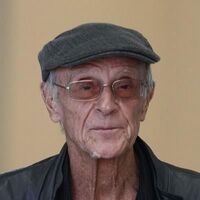
Saúl Ibargoyen, poeta de una tímida y desmedida erótica de la verdad Por Francesca Gargallo Nació en Montevideo, Uruguay, el 26 de marzo de 1930. Poeta, cuentista, novelista, traductor, periodista cultural, editor, coordinador de talleres de poesía, promotor cultural Cuando la realidad es desmedida, la poesía no tiene forma de ser equilibrada. El eros, que es pulsión de vida y canto necesitado de romper barreras, construye entonces el nexo entre lo final, lo extremo de nuestra experiencia humana: el amor y la muerte, la finalidad y el término, el objeto y su anulación. Pero a diferencia de lo que se cree normalmente, la relación amor y muerte no es sólo la que lleva a Tristán e Isolda a espirar una en los brazos del otro, es también la de la siembra en temporada de seca, es la búsqueda campesina de una semilla que desafíe al desierto o al huracán, es la pulsión de un mejor futuro, es la cotidianidad política del poeta que deja sus palabras para que la gente las haga germinar. Tengo el honor de conocer a poetas que desafían la censura implícita en la fama comprada con rodeos. Entre ellos, Saúl Ibargoyen es el erótico pronunciador de las “s” de la vida: sangre, sudor, semen, saliva, sentimientos, saudade, sobrevivencia, suspiros, sonatas, sur son las palabras que pesan en sus poemas, en sus relatos, en sus novelas y aún en esos híbridos novelescos que recogen sus memorias. Desmedido como quien se libera de lo desagradable permitiendo a la escritura soltar las verdades que se guardan, Saúl Ibargoyen es conocido como “la gran coneja de la poesía uruguaya” por su capacidad de parir literatura: 40 libros de poemas, tres novelas, cuatro recuentos de relatos, una obra teatral, diversas antologías, la impresionante reflexión ético-política-sicoanalítica y literaria contenida en Sangre en el sur. El fascismo es uno solo son la avalancha de escrituras que su fértil pluma nos regala para inscribirlo, y de paso inscribirnos como lectoras y lectores, en el lugar de la vida, en el aquí y ahora que se multiplica en la hondura de los recuerdos, el arrebato de la pasión, la intensidad de la mirada amante. Y desmedido como quien ha podido cantarle al mundo mejor y al sujeto del deseo carnal, haciendo de ambos un único objeto inalcanzable del deseo, Saúl es también un poeta de la palabra oral. Ha teorizado sobre las “hablas” reales de los pueblos que viven sin reconocimiento pleno, y que la literatura sólo recoge cuando la censura de lo reconocido ya no puede soportarse. Hablas en ocasiones poéticas y, en otras, prosas crudas de las fronteras lingüísticas, las que dicen las flores en el náhuatl castellanizado de Puebla o expresan posiciones en el español brasileñizado de la frontera norte de Uruguay, su frontera, su lugar del habla primigenia, su lugar de políticas necesariamente internacionalistas porque locales. El valor que Ibargoyen da a estas hablas lo lleva a reconocer, por ejemplo, el aspecto más entrañable del hiper-mestizaje múltiple de la realidad mexicana; eso es, el cosmopolitismo que se genera entre comunidades que hablan más de 62 lenguas antiquísimas insertas en un territorio castellanizado, cosmopolitismo que va de lo interno a lo exterior cuando estas 62 lenguas son las de los y las migrantes que reinventan la poesía política en la espalda que es puente en la frontera norte, según lo dijeran Ana Castillo y Cherrie Moraga. En La sangre interminable, de 1982, novela que se ubica en la misma área de la frontera lingüística y política de los cuentos de Frontera de Joaquim Coluna, de 1975, Saúl monta tal y como lo haría un director de teatro, una narración de política, amor y muerte mediante dolores heroicos y cotidianidades laborales que se resuelven en metáforas históricas. Utiliza palabras y situaciones para expresar que entre las habilidades de sus personajes y el significado de sus actos en un clima de represión policial totalizante, se inserta casi como si fuera un personaje insustituible un lenguaje tan coloquial como reinventado por la necesidad de darle grafía al habla de la existencia popular. En Noche de espadas, de 1987, los neologismos, regionalismos, sincretismos son nuevamente los personajes de la trama de una lengua capaz de incorporar una palabra en guaraní y otra en francés para reconstruir la historia mítica y real de un Uruguay que es, en sí, todo él una frontera. En Toda la Tierra, del 2000, la zona de la frontera entre Uruguay y Brasil sigue siendo desde México el espacio donde ubicar la lengua de la utopía de América, la lengua de un mercader musulmán, un cura campesino, todos con algo de indio y algo de migrante, con algo de negro y algo de culto, personajes de un habla que permite al autor inventar el derecho a ser de una compleja América nuestra para no errar en la repetición de lo consabido, según el mandato de Simón Rodríguez. Así como consagra el habla en su prosa, de manera continua, sin ruptura de sentido, Saúl Ibargoyen se manifiesta como un poeta de la palabra vital en su labor de tallerista y periodista. Saúl es un educador nato, uno de esos hombres que en la juventud se aman sin posibilidad de poner límites al arrobamiento en cuanto se beben una cantina sin detener jamás el flujo de los recuerdos organizados por un superyó generoso. Es un maestro. Un hombre que narra porque sabe, que suelta la imagen en la palabra para explicar, para exponer, para proponer. Saúl ha escuchado, formado, dialogado a centenares de poetas, despertando en algunas la poeticidad con sus propias palabras, y empujando a otras a no censurarse, a defenderse, a que nada ni nadie logre impedirles dar rienda a lo que las inscribe en el lugar de su ser. Se necesita el entusiasmo del adolescente, la fuerza del militante, la perseverancia del estudioso, el interés del enamorado, el cuidado del amigo, el todo aderezado de despreocupación por el bienestar económico y la atención por la humanidad de la otra persona para lograr una oralidad poética tan constructiva. Una oralidad que pretende unir el presente del poeta (¿de la poeta? a veces Saúl es bisexuado) al pasado mítico, al origen del versificar con la esperanza de un futuro donde se concrete la acción poética de cambio. En Nuevas destrucciones escribe cual quisiera darme la razón: Alguien sí se adelantó a todos los tiempos y dijo en su lengua de cantor trashumante que haría un verso de nada un verso tomado de palabra sin nacer de sonidos de árboles partidos y llanuras incendiadas que moluscos mordidos en su últimas desnudez que bestias adormecidas entre huesos corrompiéndose que súbitas campanas y espadas incesantes que monedas impuras y cruces deshabitadas que íntimas camisas y alimentos rechazados que documentos de guerras y fetos en gestación produjeran: sí aquellos sonidos del tercer verso de este canto que el viejo cantor y sus cenizas perdidas no podrán escuchar porque el verso hecho de nada se mezcló malamente con el tiempo pasado que vendrá. Saúl ha dejado de beber hace años, sin embargo puede tomar una copa de vino en la mano y tras olerla declamar -¿declarar?, ¿afirmar?, ¿poetar?- que sin la búsqueda insaciable de la Musa, el sujeto-objeto inalcanzable del deseo, no habría poesía, porque es la mirada de quien anhela la que cambia la realidad (y la transformación del ser es el arte mismo). La existencia de una musa total no es cosa menor para este poeta que tiene dos heterónimos, un muy místico Mahmud islámico y un amistoso Mishiko Hudo, de sintoísta memoria, con que homenajear insistentemente a la mujer que pone en peligro la seguridad del hombre construido por la sociedad tanto como al poeta que la desafía; eso es, heterónimos con que exaltar a la musa abstraída de la imaginación erótica de la lengua que pone en mayor peligro aún la imagen de lo real, la definición de la luz y la racionalidad masculinas. Heterónimos que el político Saúl se atreve a citar para confirmar sus teorías de occidental sureño. Si Mahmud le canta al amor desde la obediencia del fiel, sus palabras son pruebas de una verdad imperecedera. Sin embargo, Saúl Ibargoyen las traiciona, y a la vez exalta, al hablar de la musa en rojo mayor como de una “muchacha sola en sí misma”. Para terminar de complicar las cosas, en torno al amor que es la fuente de palabras de la que abrevan esos seres conocidamente complementarios, en una ocasión Saúl me dijo: “Cuando me enamoro no corro peligro, la imagen nunca es real. No hay musa real. Las musas concretas tienen capacidad de iluminación, pero no son físicamente definidas”. ¿Será que el poeta es tímido? ¿Será que la timidez es una componente de esa Gran Madre de la literatura que es la poesía? No deberíamos olvidar que Saúl Ibargoyen ha hecho del exilio, que es un espacio de extrañamiento de lo real conocido, un velo sobre la desnudez de la persona, una distancia, pues que Saúl ha hecho del exilio su ámbito de creación. Por ello pregunta a un gato rojo “¿Sabes tú en qué lugar nacieron/ estos árboles desgastados por el aire?”. La realidad del exiliado es no poder entender cómo ha llegado donde está ni poder ser entendido a cabalidad porque entre él y el mundo nuevo que lo acoge se inserta una especie de espejo humeante –creo que esta imagen mexica de la realidad que despierta a la razón es muy concreta para describir a la emigrante, al exiliado-; de tal forma la expresión del exiliado es la del elemento poético que se devela sólo poco a poco, tras mucho hacerse del rogar. La expresión del exiliado es la de la timidez de la poesía, la timidez que desgarra el velo del silencio sólo gracias al ímpetu de la necesidad de decir para ser. Timidez desmedidamente valiente, por supuesto, porque impulsa el balbuceo poético que afirma certeramente que todo es palabra, que quien decide escribir no siempre sabe qué lo empuja a decidir hacerlo y que la literatura es como un viento ciudadano que sacude los mantos que se han formado en aires distintos y están saturados de lluvia. En El escriba de pie, libro por el cual el Instituto Nacional de Bellas Artes (INBA) le otorgó el Premio Nacional de Poesía “Carlos Pellicer” para obra publicada en 2002, Saúl con tímida desmesura escribe, y prometo que con esto termino: Pero que oiga el que nunca escucha que lea o adivine el de los ojos innumerables: tampoco ahora soy el escriba el notario el escribiente el pendolista el amanuense. Sí puedo palpar el frío deteniéndose en un corazón que se contrae entre cáscaras y élitros negros. Y los sudores incontados del día se revuelven entre hierbas y máquinas y excrementos preparando otra vez su regreso de fuego. Escucha tú a quien siempre hemos llamado tú tan solamente solo y tan solísima como estás en cualquier ribera de esta madre de casi todos los ríos: agua es sólo organizándose que simplemente transcurre dando quietud a cada pulsación a cada flujo a cada advenimiento a cada latido a cada golpe a cada borboteo a cada vértigo para que su cuerpo inabrazable viaje y se aparte del cambiante cauce o envase o cartucho o vaina de arrastradas sustancias que pretenden contenerlo: Escucha tú que fumas entre los blancores de la niebla tú que despliegas tu chilaba perturbada por las sudoraciones del día inicial mientras en los dátiles enrojece un pellejo amarillo y otras pieles como sangrando acaban de oscurecer: Oye tú que aún no encuentras una casa sonora para los ecos de tu boca subjetiva ni cinco huecos en un tubo de hueso o de caña o de barro para que una lengua se disponga a soplar: Dime tú si hay un tiempo que respira desde todo lo lejos en los trigales muertos. Referencias https://francescagargallo.wordpress.com/ensayos/ensayos-letras/saul-ibargoyen-poeta/
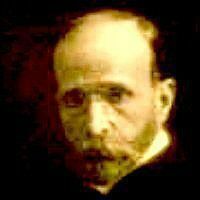
Francisco Asís de Icaza y Beña (Ciudad de México, 2 de febrero de 1863 - Madrid, 28 de mayo de 1925) crítico y poeta mexicano. Su labor crítica se centró en temas literarios españoles. Vida Francisco de Icaza se dedicó desde su juventud a la carrera diplomática. Fue amigo de don Vicente Riva Palacio, quien, al ser nombrado ministro de México en España, lo llevó consigo como secretario. Fue ministro plenipotenciario en Alemania y en España. En España, pasó la mayor parte de su vida, primero en calidad de diplomático y tras el estallido de la Revolución mexicana, en condición de exiliado. Representó a México en el III Centenario del Quijote en Madrid en 1905. Fue conocido primero como poeta, pero alcanzó notoriedad entre sus primeros ensayos citar el titulado Examen de críticos en 1894. En 1901 fue premiado su libro sobre las Novelas ejemplares de Cervantes (1901), en un certamen de Ateneo de Madrid. Publicó estudios de historia literaria. Sus poesías fueron publicadas en la Revista Azul. Académico Fue miembro correspondiente de la Academia Mexicana de la Lengua. En España, fue miembro de la Real Academia de la Historia y de la Academia de Bellas Artes. En su país natal, seis años antes de su muerte, se convirtió en uno de los impulsores y fundadores de la Academia Mexicana de la Historia, que celebró su sesión inaugural en 1919, en su sede de la calle de San Ildefonso de la capital mexicana. Ocupó el sillón 5, de 1919 a 1925.3 En el acta de inauguración figuran como miembros fundadores, junto a Francisco A. de Icaza, otros eruditos tan notables como Luis García Pimentel, el padre Mariano Cuevas, el marqués de San Francisco (Manuel Romero de Terreros), el padre Jesús García Gutiérrez, Jesús Galindo y Villa, Luis González Obregón y Juan B. Iguíniz. Publicaciones y obras En el Boletín de la Real Academia Española publicó numerosos artículos y ensayos críticos centrados en la literatura española del Siglo de Oro, siendo uno de los grandes especialistas de su tiempo. Realizó el estudio monográfico El Quijote durante tres siglos en 1915. En esta línea de trabajo, su obra más relevante es una investigación sobre la peripecia vital del Fénix de los ingenios que fue publicada en 1925 bajo el título de Lope de Vega. En 1925, su obra Sus amores y sus odios y otros estudios, fue galardonada con el Premio Nacional de Literatura. Francisco de Asís de Icaza fue también un notable poeta que gozó del reconocimiento de sus contemporáneos, sobre todo por su perfecta asimilación de la poesía tradicional española. Entre sus poemarios impresos se encuentran, Lejanías publicado en 1892, La canción del camino en 1906 -obra en la que alcanzó sus mayores logros a la hora de adaptar a la pluma de un autor culto como él las formas populares- y Cancionero de la vida honda y de la emoción fugitiva en 1922. Fue en España donde Icaza comenzó a frecuentar los foros y cenáculos literarios y donde entabló amistad, en plena juventud, con algunos poetas modernistas de la talla del cubano Julián del Casal y el malagueño Salvador Rueda. En Madrid también, cuando ocupaba ya el cargo de embajador de México, nació en 1899 su hija Carmen de Icaza, una de las figuras más representativas de la narrativa española del siglo XX escrita por mujeres. El viaje a su país natal en 1924 fue amargado por la polémica a que dio lugar la publicación del Diccionario autobiográfico de conquistadores y pobladores de la Nueva España en Madrid en 1923, parte de cuyo material había sido compilado por Francisco del Paso y Troncoso. Tradujo al español obras de Nietzsche, Hebbel, Liliencron y Dehmel. Su más famosa frase es: Dale limosna, mujer, que no hay en la vida nada como la pena de ser ciego en Granada Versos de Francisco de Icaza recogidos en una placa de Granada. Obras * Examen de críticos (1894) * Supercherías y errores cervantinos. * Las novelas ejemplares de Cervantes. (1901) * El Quijote durante tres siglos (1915) * Lope de Vega. Sus amores y sus odios y otros estudios (1925) Premio Nacional de Literatura. Poemarios: * Lejanías (1892) * La canción del camino (1906) *m Cancionero de la vida honda y de la emoción fugitiva (1922) Referencias Wikipedia—http://es.wikipedia.org/wiki/Francisco_de_Icaza

My life is just what it is...mine. I've done some things that I'm not proud of... I have some regrets... One thing I can say is I'm only human... Live, Laugh, Love... *****These poems are not in order. Some of them were written years ago, some were written recently. I upload them as I find them*****
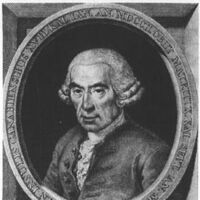
Juan de Iriarte y Cisneros (La Orotava, actual Puerto de la Cruz, Islas Canarias, 15 de diciembre de 1702 - †Madrid, 23 de agosto de 1771), helenista, latinista, bibliógrafo, lexicógrafo y poeta español de la Ilustración, tío del poeta y dramaturgo Tomás de Iriarte y Nieves Ravelo, (Puerto de la Orotava, Tenerife, 18 de septiembre de 1750 - Madrid, 17 de septiembre de 1791), y de los diplomáticos Bernardo de Iriarte y Nieves Ravelo, (1735, Puerto de la Cruz - 1814, Burdeos), y Domingo de Iriarte y Nieves Ravelo, (1739 - 1795), Embajador en Polonia hacia el fin de sus días, entre otras cosas. Jaime bigotillo= A los once años fue enviado a París (1713) para completar su educación; dos años después pasó a Ruan en compañía de monsieur Hely, amigo de su padre y antiguo cónsul de Francia en las Islas Canarias; pero fueron tan singulares los progresos del muchacho en todas las disciplinas, que sobrepasó a todos sus condiscípulos y se creyó conveniente enviarlo de nuevo a París, al Liceo Louis-le-Grand, donde le tocó ser alumno de Voltaire y pasó los ocho siguientes años. En 1723 abandonó el colegio y se trasladó a Londres para completar sus estudios, de forma que terminó dominando el griego, el latín, el francés y el inglés como su misma lengua nativa. Luego regresó a su isla natal, pero como se encontró con el fallecimiento de su padre y ahí sus talentos permanecían desaprovechados, marchó en 1724 a Madrid, donde obtuvo la protección del jesuita escocés Guillermo Clarke, confesor y bibliotecario de Felipe V; ocupó, pues, cargos de confianza en Palacio y fue nombrado en 1729 Oficial Escribiente de la recién fundada Biblioteca Real, y tres años más tarde Bibliotecario de Asiento. En tales labores editó en 1729 una Regia Matritensis Bibliotheca Geographica et Chronologica, el primer catálogo publicado por la Biblioteca Pública Real. El Bibliotecario Mayor de la institución e historiador Juan de Ferreras hizo posible que Iriarte fuera designado preceptor de los hijos de los Duques de Béjar y de Alba (1725) y del infante don Manuel de Portugal. Tomó parte en la redacción del Diario de los Literatos (1737) como crítico literario, junto a ilustrados de la talla de Gregorio Mayáns y Siscar y Lorenzo Hervás y Panduro. Escribió una Gramática latina en verso con comentario en prosa, lo que le valió elogios como humanista. Por ello el ministro marqués de Villarias creyó conveniente nombrarlo oficial traductor de la primera Secretaría de Estado el 21 de febrero de 1742 y en razón de este cargo redactó despachos latinos para las diversas cortes de Europa, así como las inscripciones oficiales puestas en las tumbas de los reyes, palacios, conventos, puentes y calzadas, hasta el mismo momento de su muerte. Al año siguiente es nombrado miembro supernumerario de la Real Academia Española y de número el 21 de septiembre de 1747. También se le eligió en la de Bellas Artes de San Fernando en 1752. Su discurso de entrada en la primera versó Sobre la imperfección de los diccionarios que, junto con sus trabajos como director del gran Diccionario latino-español que el gobierno le había mandado redactar, es su principal contribución a la lexicografía. Compuso además una Paleografía griega y una Bibliotheca graeca en la que describía no menos de cincuenta códices griegos de la Real que copió el famoso Constantino Lascaris y que estaban bajo su custodia. Sus trabajos bibliográficos, sin embargo, se extendieron más lejos, y se le debe, además, una Lista de los Principales Manuscritos de la Librería de los Marqueses de Villena. Sacada de la Hijuela Authentica de los bienes que quedaron por muerte del Marqués Don Andrés Pacheco, en 9 de octubre de 1748. Por la tarde por mí mismo, que se conserva en la Biblioteca de la Fundación Juan March. También convenció al padre Enrique Flórez, gran amigo suyo, para que comenzase su monumental España sagrada. Sobresalió, por otra parte, como poeta latino (Tauromaquia matritensis, sive taurorum ludi, 1725), y en este campo sus versos latinos fueron más celebrados que los que también compuso en castellano, aunque entre estos últimos sus muy concisos epigramas, de los que compuso ciento catorce, resultan memorables; a título de ejemplo: El señor don Juan de Robres, con caridad sin igual, hizo este santo hospital... y también hizo los pobres. Él mismo dio del género una definición que ha pasado a ser popular: A la abeja semejante, para que cause placer, el epigrama ha de ser Para esta forma escoge el octosílabo, por lo general redondillas o cuartetas asonantadas; sus gustos en estilo eran muy neoclásicos, como demuestra el epigrama que consagró a Luis de Góngora: "Del obscuro Licofrón / mereces, Góngora, el nombre; / que si él fue griego entre griegos, / tú eres griego entre españoles". Como gramático redactó también Sobre los verbos reflexivos y recíprocos, 1756; Advertencias sobre la sintaxis castellana, 1755 y una Gramática latina en verso castellano, 1764, reimpresa al poco de su muerte al cuidado de su sobrino Tomás. Las Obras sueltas de don Juan de Iriarte salieron a expensas de la aristocracia madrileña en dos elegantes tomos en cuarto mayor publicados en 1774 con un retrato compuesto y dibujado por Maella y grabado por Carmona. Obras * Obras sueltas de don Juan de Iriarte, Madrid, 1774, dos vols. * Regiae Bibliothecae Matritensis Codices Mss. Joannes Iriarte, eiusdem Custos, Manuscriptorum museo olim praepositus, idemque Regis Interpres intimus, excussit, recensuit, notis, indicibus, anecdotis pluribus evulgatis illustravit (1729) * Artículos diversos en el Diario de los Literatos (1737) * Sobre la imperfección de los diccionarios, discurso de ingreso en la Real Academia Española de la Lengua, 1747. * Colección de refranes castellanos traducidos en metros latinos, 1749. * Sobre los verbos reflexivos y recíprocos, 1756. * Advertencias sobre la sintaxis castellana, 1755. * Gramática latina en verso castellano, 1764. * Paleografía griega, 1760. * Bibliotheca graeca * Crítica a las endechas de don Antonio de Solís a la conversión de San Francisco de Borja. * Tauromaquia matritensis, sive taurorum ludi, Lista de los Principales Manuscritos de la Librería de los Marqueses de Villena. 1725. * Lista de los Principales Manuscritos de la Librería de los Marqueses de Villena. Sacada de la Hijuela Authentica de los bienes que quedaron por muerte del Marqués Don Andrés Pacheco, en 9 de octubre de 1748. Por la tarde por mí mismo. pequeño, dulce y punzante. Referencias Wikipedia - http://es.wikipedia.org/wiki/Juan_de_Iriarte
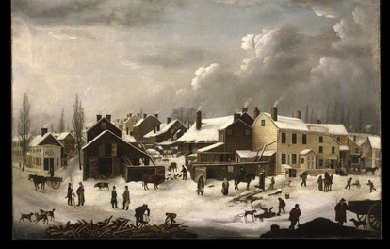
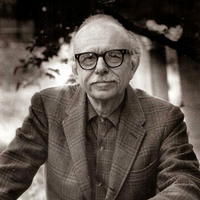
David Ignatow (February 7, 1914– November 17, 1997) was an American poet. Life David Ignatow was born in Brooklyn on February 7, 1914, and spent most of his life in the New York City area. He died on November 17, 1997, at his home in East Hampton, New York. His papers are held at University of California, San Diego. Ignatow began his professional career as a businessman. After committing wholly to poetry, Ignatow worked as an editor of American Poetry Review, Analytic, Beloit Poetry Journal, and Chelsea Magazine, and as poetry editor of The Nation. He taught at the New School for Social Research, the University of Kentucky, the University of Kansas, Vassar College, York College, City University of New York, New York University, and Columbia University. He was president of the Poetry Society of America from 1980 to 1984 and poet-in-residence at the Walt Whitman Birthplace Association in 1987. Awards * Ignatow’s many honors include a Bollingen Prize, two Guggenheim fellowships, the John Steinbeck Award, and a National Institute of Arts and Letters award “for a lifetime of creative effort.” He received the Shelley Memorial Award (1966), the Frost Medal (1992), and the William Carlos Williams Award (1997) of the Poetry Society of America. Bibliography * Living Is What I Wanted: Last Poems (BOA Editions, 1999) * At My Ease: Uncollected Poems of the Fifties and Sixties (1998) * I Have a Name (1996) * The End Game and Other Stories (1996) * Against the Evidence: Selected Poems, 1934-1994 (1994) * Despite the Plainness of the Day: Love Poems (1991) * Shadowing the Ground (1991) * New and Collected Poems, 1970-1985 (1986) * Leaving the Door Open (1984) * Whisper the Earth (1981) * Conversations (1980) * Sunlight (1979) * Tread the Dark (1978) * Selected Poems (1975) * Facing the Tree (1975) * Poems: 1934-1969 (1970) * Rescue the Dead (1968) * Earth Hard: Selected Poems (1968) * Figures of the Human (1964) * Say Pardon (1962) * The Gentle Weightlifter (1955) * Poems (1948) References Wikipedia—https://en.wikipedia.org/wiki/David_Ignatow
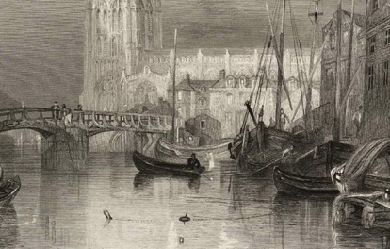
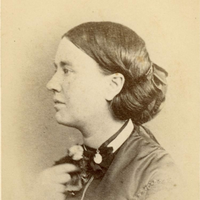
Jean Ingelow (17 March 1820– 20 July 1897), was an English poet and novelist. She also wrote several stories for children. Early life Born at Boston, Lincolnshire, she was the daughter of William Ingelow, a banker. As a girl she contributed verses and tales to magazines under the pseudonym of Orris, but her first (anonymous) volume, A Rhyming Chronicle of Incidents and Feelings, which came from an established London publisher, did not appear until her thirtieth year. This was called charming by Tennyson, who declared he should like to know the author; they later became friends. Professional life Jean Ingelow followed this book of verse in 1851 with a story, Allerton and Dreux, but it was the publication of her Poems in 1863 which suddenly made her a popular writer. This ran rapidly through numerous editions and was set to music, proving very popular for English domestic entertainment. Her work often focused on religious introspection. In the United States, her poems obtained great public acclaim, and the collection was said to have sold 200,000 copies. In 1867 she edited, with Dora Greenwell, The Story of Doom and other Poems, a collection of poetry for children At that point Ingelow gave up verse for a while and became industrious as a novelist. Off the Skelligs appeared in 1872, Fated to be Free in 1873, Sarah de Berenger in 1880, and John Jerome in 1886. She also wrote Studies for Stories (1864), Stories told to a Child (1865), Mopsa the Fairy (1869), and other stories for children. Ingelow’s children’s stories were influenced by Lewis Carroll and George MacDonald. Mopsa the Fairy, about a boy who discovers a nest of fairies and discovers a fairyland while riding on the back of an albatross) was one of her most popular works (it was reprinted in 1927 with illustrations by Dorothy P. Lathrop). Anne Thaxter Eaton, writing in A Critical History of Children’s Literature, calls the book “a well-constructed tale”, with “charm and a kind of logical make-believe.” Her third series of Poems was published in 1885. Jean Ingelow’s last years were spent in Kensington, by which time she had outlived her popularity as a poet. She died in 1897 and was buried in Brompton Cemetery, London. Criticism Ingelow’s poems, collected in one volume in 1898, were frequently popular successes. “Sailing beyond Seas” and “When Sparrows build in Supper at the Mill” were among the most popular songs of the day. Her best-known poems include “The High Tide on the Coast of Lincolnshire” and “Divided”. Many, particularly her contemporaries, have defended her work. Gerald Massey described The High Tide on the Coast of Lincolnshire as “a poem full of power and tenderness” and Susan Coolidge remarked in a preface to an anthology of Ingelow’s poems, "She stood amid the morning dew/ And sang her earliest measure sweet/ Sang as the lark sings, speeding fair/ to touch and taste the purer air". “Sailing beyond Seas” (or “The Dove on the Mast”) was a favourite poem of Agatha Christie, who quotes it in two of her novels, The Moving Finger and Ordeal by Innocence. Still, the larger literary world largely dismissed her work. The Cambridge History of English and American Literature, for example, wrote: "If we had nothing of Jean Ingelow’s but the most remarkable poem entitled Divided, it would be permissible to suppose the loss [of her], in fact or in might-have-been, of a poetess of almost the highest rank.... Jean Ingelow wrote some other good things, but nothing at all equalling this; while she also wrote too much and too long." Some of this criticism has overtones of dismissiveness of her as a female writer: “ Unless a man is an extraordinary coxcomb, a person of private means, or both, he seldom has the time and opportunity of committing, or the wish to commit, bad or indifferent verse for a long series of years; but it is otherwise with woman.” There have many parodies of her poetry, particularly of her archaisms, flowery language and perceived sentimentality. These include “Lovers, and a Reflexion” by Charles Stuart Calverley and “Supper at the Kind Brown Mill”, a parody of her “Supper at the Mill”, which appears in Gilbert Sorrentino’s satirical novel Blue Pastoral (1983). It is no longer fashionable to criticise poetry for the use of dialect.

Andrés Ixtepan (Coatzacoalcos, Veracruz, 21 de Junio de 1995 ) Es un poeta y escritor mexicano. Autor de Tu cuerpo y su dulzura. Nació en Coatzacoalcos, Veracruz, ciudad en la que pasaría sus primeros años de vida, posteriormente se mudaría a la ciudad de Tuxtla Gutierrez, donde recibiría la educación primaria, misma en la que nacería su interés por la poesía. Andrés Ixtepan participó en concursos de declamación desde una temprana edad. Al terminar sus estudios correspondientes a la educación primaria, se mudaría nuevamente, siendo Tehuacán, Puebla su siguiente destino. Para entonces, la poesía ya no formaba parte de su vida. Años después, comenzaría sus estudios universitarios en Mercadotecnia y Publicidad, etapa en la que volvería a encontrarse con una vieja amiga: La poesía. Andrés Ixtepan comenzó a compartir sus escritos en redes sociales en el 2017, pero sería hasta el 2019 cuando su nombre comenzaría a volverse conocido entre los amantes de la poesía. Sumando al día de hoy, más de 600,000 seguidores en redes sociales.
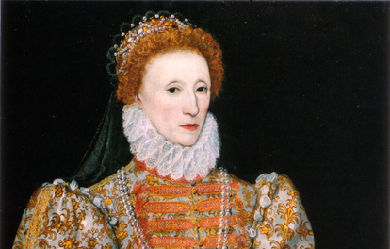
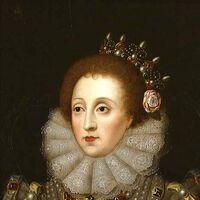
The reign of Queen Elizabeth I is often referred to as The Golden Age of English history. Elizabeth was an immensely popular Queen, and her popularity has waned little with the passing of four hundred years. She is still one of the best loved monarchs, and one of the most admired rulers of all time. She became a legend in her own lifetime, famed for her remarkable abilities and achievements. Yet, about Elizabeth the woman, we know very little. She is an enigma, and was an enigma to her own people. Elizabeth was the daughter of King Henry VIII and his second wife, Anne Boleyn. She was born on 7 September 1533 at Greenwich Palace. Her birth was possibly the greatest disappointment of her father's life. He had wanted a son and heir to succeed him as he already had a daughter, Mary, by his first wife, Katherine of Aragon. He had not divorced Katherine, and changed the religion of the country in the process, to have only another daughter. Elizabeth's early life was consequently troubled. Her mother failed to provide the King with a son and was executed on false charges of incest and adultery on 19 May 1536. Anne's marriage to the King was declared null and void, and Elizabeth, like her half-sister, Mary, was declared illegitimate and deprived of her place in the line of succession. The next eight years of Elizabeth's life saw a quick succession of stepmothers. There was Jane Seymour who died giving birth to the King's longed for son, Edward; Anne of Cleves who was divorced; Catherine Howard who was beheaded; and finally Catherine Parr. For generations, historians have debated whether the constant bride changing of her father was responsible for Elizabeth's apparent refusal to marry. It is certainly possible that the tragic fates of Anne Boleyn and Catherine Howard impressed upon her a certain fear of marriage, but there may have been other reasons for the Queen's single state, such as a fear of childbirth, which claimed the lives of a significant number of women in this period. Even if the Queen had no personal reservations about marriage, there were political problems with almost every contender for her hand. Religion was a major divisive issue, and there was also the problem of whether Elizabeth would have to relinquish any of her royal powers to a husband in an age when the political sphere was exclusively male. As a child, Elizabeth was given a very impressive education. It had become popular amongst the nobility to educate daughters as well as sons and Elizabeth excelled at her studies. She was taught by famous scholars such as William Grindal and Roger Ascham, and from an early age it was clear that she was remarkably gifted. She had an especial flare for languages, and by adulthood, she could reputedly speak five languages fluently. Elizabeth's adolescence was no easier than her childhood. While the King lived, she was safe from political opportunists, but when he died in the January of 1547, and his young son became King Edward VI, she was vulnerable to those who saw her as a political pawn. Despite being officially illegitimate, Henry had reinstated his daughters in the line of succession. Mary was to follow Edward, and Elizabeth was to follow Mary. This meant that Elizabeth was now second in line to the throne. Edward was too young to rule himself as he was only nine years old, so his uncle, Edward Seymour, became Protector of England. His younger brother, Thomas Seymour, was jealous of his position and attempted to overthrow him. His scheme, which involved an attempted kidnapping of the Boy King, cost him his life. He had made no secret of his desire to marry Elizabeth (in Tudor times a girl was considered of marriageable age at twelve) so she was implicated in his plot. It was treason for an heir to the throne to marry without the consent of the King and his Council, and at only fifteen years of age, Elizabeth had to persuade her interrogators that she knew nothing of the plot and had not consented to marry the King's uncle. She succeeded in defending her innocence, but rumors of an illicit affair with Seymour, all the more scandalous because he had been married to her last step-mother, Katherine Parr, (before she died in childbirth), plagued her long afterwards. Elizabeth again found herself implicated in treason after the Wyatt rebellion of 1554. Edward had died in the summer of 1553 from prolonged ill health, and Elizabeth's half-sister, Mary, was now Queen Mary I of England after a brief fight for the throne against the scheme of John Dudley, Duke of Northumberland, to make his daughter in law, Jane Grey, queen. Mary was not a particularly popular monarch, and was suspicious of her Protestant half-sister. It was thus not difficult to persuade her that Elizabeth may have been conspiring with Thomas Wyatt and his men to seize the throne. Whether or not the rebellion was to make Elizabeth queen is uncertain, and it is also unknown whether Elizabeth had any knowledge of the conspirators plans. Even if she did have knowledge of them, there is no evidence that she approved of the actions of Wyatt and his followers. Elizabeth said she was innocent of the accusations made against her, but she was still arrested and sent to the Tower of London as a prisoner. Many of those surrounding the Queen would have liked Elizabeth to have been executed, but there was no evidence against her and she was popular with the people. Elizabeth was kept a captive at the Tower for two months and then removed to Woodstock Manor in Oxfordshire, where she was kept a prisoner for a year. The house itself was uninhabitable so she had to be lodged in the gatehouse with her servants. It was only at the behest of the Queen's husband, Philip of Spain, that she was allowed to return to her childhood home of Hatfield in Hertfordshire. Philip was aware of the Queen's poor health and wanted to gain the friendship of Elizabeth to ensure peaceable relations between England and Spain should his wife die and Elizabeth succeed to the throne. Elizabeth did finally succeed to the throne on 17th November 1558. It was a moment of supreme triumph for the unwanted daughter who had spent her life in the shadow of the court, cast aside and forgotten. The years following the death of her father had called for sobriety and caution, but now that she was Queen, Elizabeth was determined to enjoy her new found freedom and live life to the full. She loved all kinds of sports, especially horse riding, and in the early years of her reign spent many an hour riding. She also loved hunting, hawking, bear baiting, and watching the male courtiers excel at jousts or other sporting contests. She loved music and dancing, pageantry and masques, and could even play the virginals and the lute herself with skill. She had no time for the Puritan theologians who deemed such things impious. She also loved watching plays and created the atmosphere responsible for the flourishing of the literary masterpieces of the period against the Puritan demands for the closure of all theaters and playhouses. Elizabeth was crowned Queen on Sunday 15th January 1559. In the months that followed, the new Queen re-established the Protestant Church in England and restored the debased coinage. Perhaps to appease Catholics or to appease those who did not believe a woman could become head of the church, Elizabeth became Supreme Governor of the Church of England, rather than Supreme Head as her father had been. While it is impossible to know what exactly the Queen's personal religious beliefs were, the Church she established is an indication of them. She was a committed Protestant, and reputedly spent time in prayer every day, but she was probably a conservative Protestant. She liked candles and crucifixes in her private chapel, liked church music, and enjoyed the more traditional style of worship in contrast to the sermon based service that was becoming popular in some Protestant circles. She did not like religious extremism and did not want to persecute any of her people for their religious beliefs. However, the tenacious political nature of the Catholic/Protestant split meant that her government had to take a harsher line towards Catholics than she wanted. Now that Elizabeth was Queen, proposals of marriage flooded in, but Elizabeth committed herself to none of them. In a genius of political wheeling and dealing, she managed to use her single state to benefit the country by using the bait of marriage to draw in enemies, or to frighten them by suggesting she would marry one of their foes. Whatever Elizabeth's personal feelings towards marriage, on two occasions she did come close to matrimony. For many years, the most serious contender for her hand was Robert Dudley, created Earl of Leicester in 1564. He and Elizabeth had known each other for years and had been imprisoned in the Tower of London at the same time. He was the only serious personal love interest of the Queen's life. Politically, however, marrying him would have been a disaster. He was unpopular as he was the son of the traitor Northumberland, and was loathed even more after his wife was found dead in mysterious circumstances. It was thought he had murdered her so he would be free to marry Elizabeth. The other serious contender for the Queen's hand was Francis, Duke of Alencon/Anjou, heir to the French throne. But again, political considerations made the match ultimately impossible. Not marrying and having a child of her own meant that the succession was unsettled. Elizabeth did not like to talk about the succession and tried to have talk of it suppressed, but people were anxious about what would happen to the country when she died. However, having a child of her own may not have been an end to all problems. In the eyes of Catholics, Elizabeth was illegitimate and had no right to the throne. To them, Mary, Queen of Scots was the rightful Queen of England. Plots were made to make Mary queen and these would have been formed regardless of whether Elizabeth had a child or not. This is perhaps especially so when Mary was Elizabeth's prisoner following her disastrous reign in Scotland. Forced to flee her own country, having abdicated her throne in favor of her son, she landed in England, seeking Elizabeth's help in restoring her to her kingdom. She was immediately imprisoned. This was as much to protect her as to minimize the danger she posed to Elizabeth. Mary was kept a prisoner for almost twenty years. In that time, Elizabeth refused to hear about executing her cousin, but Mary's complicity in the Babington plot of 1586 made the execution, in the eyes of many, unavoidable. It was a traumatic time for Elizabeth, and for a while it seemed that she would not have the strength to go ahead with the execution, but she did, and Mary was executed at Fotheringay Castle on 8 February 1587. Relations between Elizabeth and Philip, now King of Spain, had begun amicably, but had deteriorated over the years as their different political and religious agendas clashed. By 1588 they were enemies of the first-rate. Philip had spoken of invading England and dethroning Elizabeth for years but the execution of the Queen of Scots gave him an added incentive. Now he could claim the English throne for himself and not for her. In the summer of 1588 he sent his mighty fleet against England. But by superior tactics, ship design, and sheer good fortune, the English defeated them. Elizabeth's popularity reached its zenith. It was also another personal triumph as she had proved that she, a woman, could lead in war as well as any man. Elizabeth was dedicated to her country in a way few monarchs had been or have been since. Elizabeth had the mind of a political genius and nurtured her country through careful leadership and by choosing capable men to assist her, such as Sir William Cecil and Sir Francis Walsingham. Elizabeth was a determined woman, but she was not obstinate. She listened to the advice of those around her, and would change a policy if it was unpopular. In appearance she was extravagant, in behavior sometimes flippant and frivolous, but her approach to politics was serious, conservative, and cautious. When she ascended the throne in 1558, England was an impoverished country torn apart by religious squabbles. When she died at Richmond Palace on the 24th March 1603, England was one of the most powerful and prosperous countries in the world.

porque primero va la escritura y luego mi voz, la tinta de una simple plumilla, es la que habla por mi boca. nací en 1998, soy chileno, y a pesar de mi corta edad de 16 años, junto a una plena juventud que para mi nunca acabara, la escritura sera por siempre mi mejor compañía, fiel a sus palabras. me encantan los libros, sentir sus hojas y olerlas también, pero no hay mejor olor como el de uno nuevo. me gustan los animales, especialmente los perros y gatos. amo la naturaleza que lastimosamente sera valorada por muy pocos de verdad. prefiero las cosas simples y sencillas. me gusta sumergirme en el placer de escribir una poesía, un poema o lo que sea y de leer un buen libro. mi autor favorito por siempre sera, STEPHEN KING.

Mis nombres son Jael Alexandra, empecé a escribir desde que tenía 13 años. Desde ese momento comencé a entender mejor mis sentimientos y me di cuenta de que vivía y sentía cada sentimiento al triple de su capacidad. Esto de escribir poemas empezó en mi vida como un juego, me alegro de que aquel juego haya llegado tan lejos para mí porque a lo largo de los años he mejorado en cada escrito, he madurado con cada etapa de mi vida y mis palabras son mucho más consistentes que antes. Al momento de escribir me encanta que los sentimientos naveguen cual personas, que tengan también un corazón como cualquiera de nosotros. La sinceridad es el punto clave para llegar al alma del lector junto al dramatismo del sufrimiento real. Confieso que a pesar de que sea un tanto "malo" vivir cada sentimiento con demasiada intensidad, me encanta porque así puedo sentir que mi alma, mis, momentos y mi vida quedan plasmadas en palabras que cualquiera no puede entender sino lo ha vivido. He pasado como cualquier persona por muchos malos y buenos momentos, han habido personas que han estado en aquellos sucesos pero puedo decir que en el pasado no fueron fuentes de inspiración; simplemente, me basaba en lo que yo sentía. Hoy puedo decir que mi vida en el presente cambió de rumbo en torno a lo que escribo ya que mi mayor fuente de inspiración tiene nombres y apellidos y no saben lo difícil que se me hace darme cuenta de que ya no está a mi lado, de que cada día nos alejamos pero que a pesar de eso mis pensamientos y mi corazón lo traen junto a mí cada vez que le escribo.

If I had a world of my own, everything would be nonsense. Nothing would be what it is because everything would be what it isn't. And contrary-wise; what it is it wouldn't be, and what it wouldn't be, it would. You see? ― Lewis Carroll, Alice in Wonderland My name is Brianna, I am currently a senior in high school. I love my friends, my boyfriend and my life. I write to vent and I write just to have something to do. It's my passion and I hope you enjoy what I do. Check out my other poetry blogs: teenink.com/users/colorguardgrl teenink.com/users/currently_liddell teenink.com/users/thecatsbark powerpoetry.org ---> username currently_liddell


